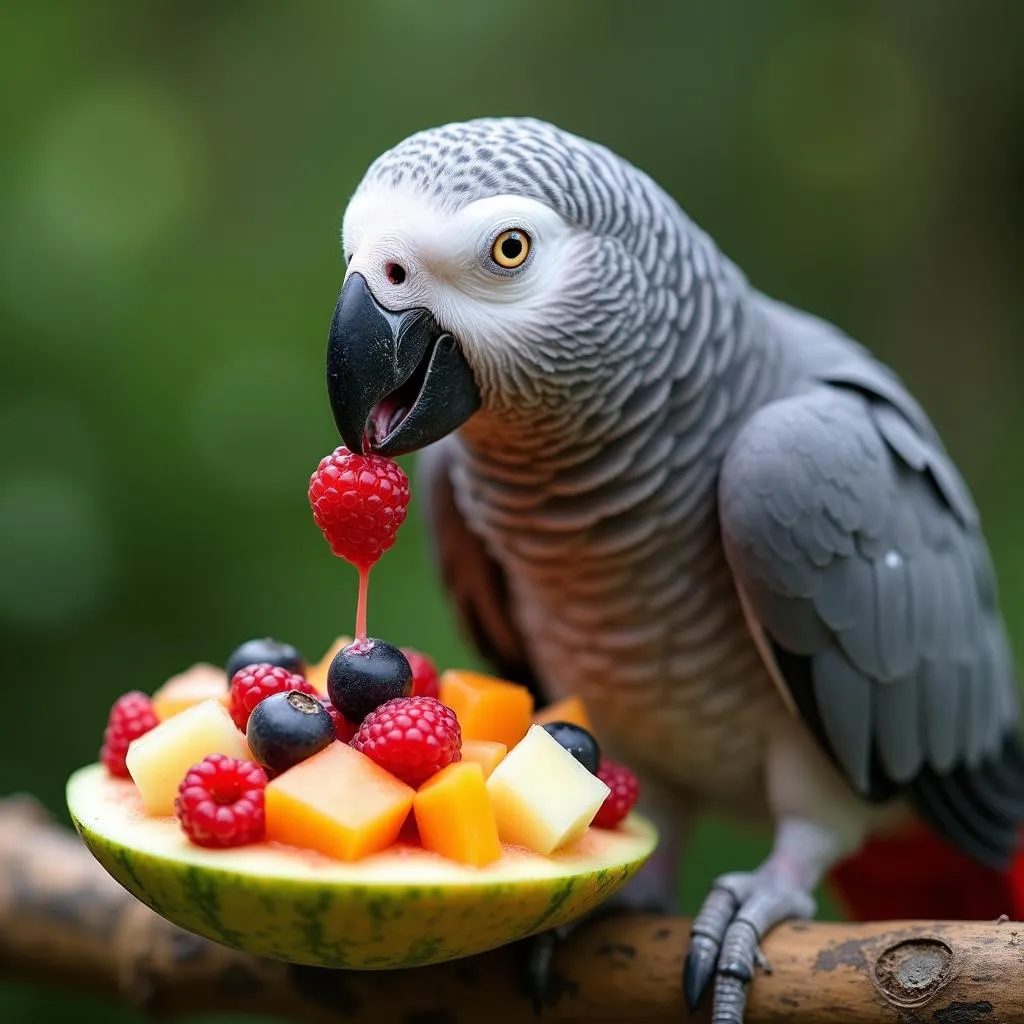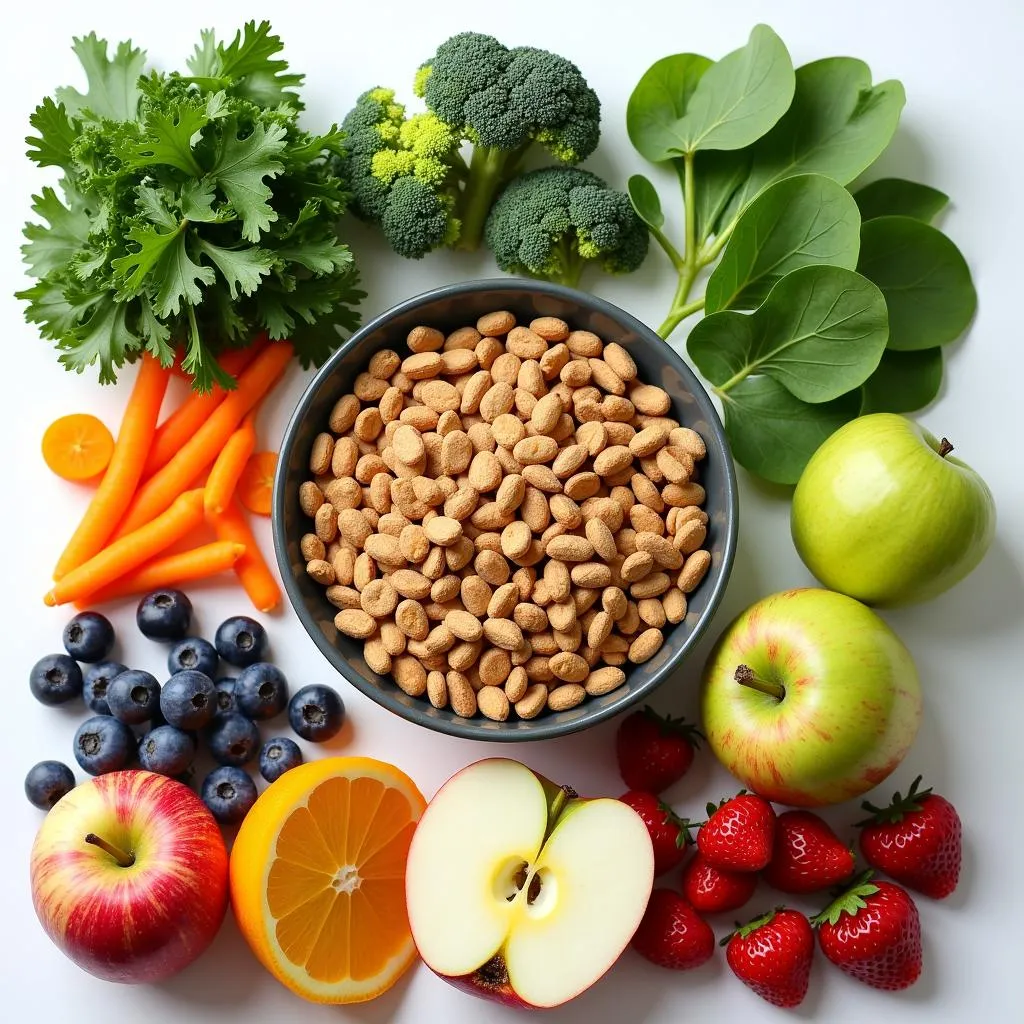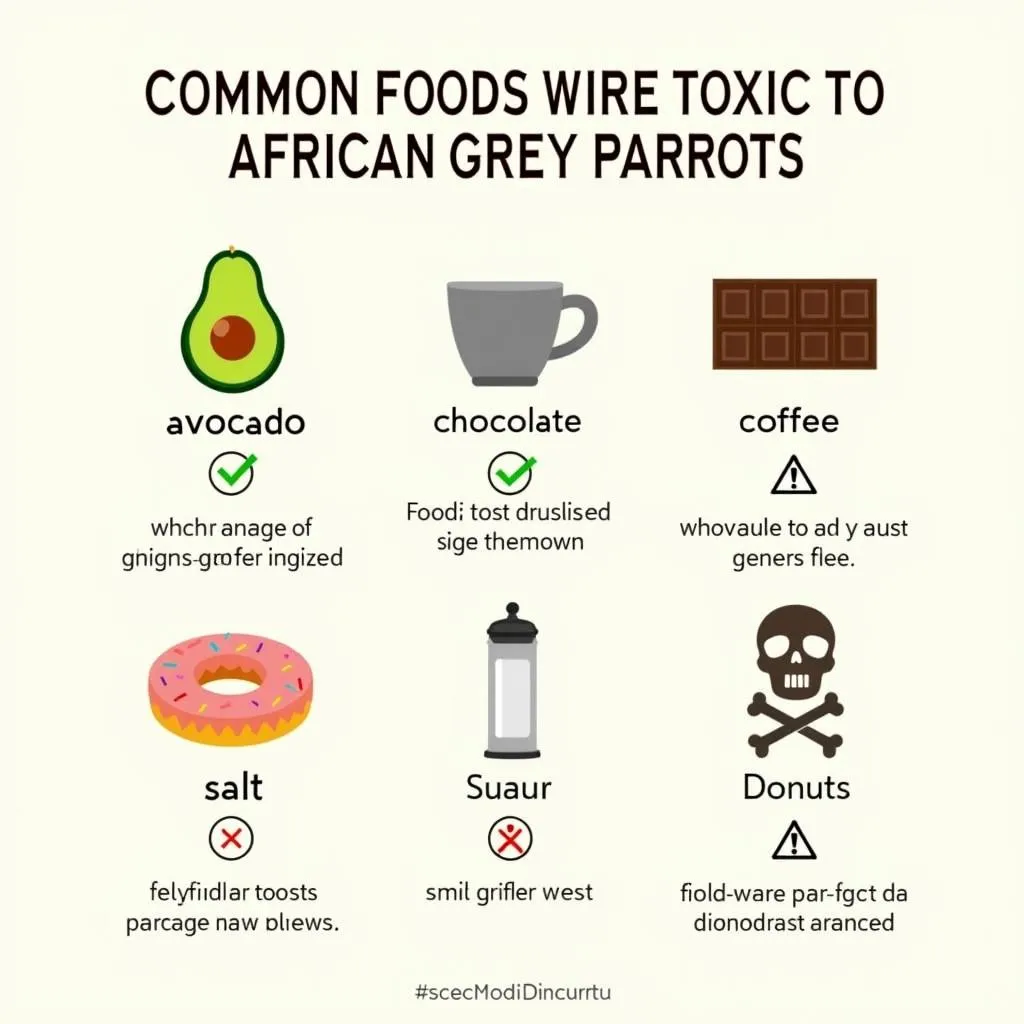Owning an African Grey parrot is an enriching experience, and ensuring their well-being starts with a balanced and nutritious diet. Crafting the perfect African Grey Diet Chart involves understanding their dietary needs beyond just seeds.
 African Grey Parrot Enjoying Fresh Fruits
African Grey Parrot Enjoying Fresh Fruits
Beyond the Seed Bowl: A Diverse Palette for African Greys
While seeds might seem like the go-to food for parrots, an african grey diet chart thrives on variety. In the wild, these intelligent birds forage for a diverse range of foods.
- Fruits: Berries, apples, melons, and oranges are excellent choices.
- Vegetables: Leafy greens like kale and spinach, as well as broccoli, carrots, and sweet potatoes, offer essential vitamins.
- Nuts: Almonds, walnuts, and pecans are great treats in moderation due to their fat content.
- Pellets: High-quality formulated pellets should make up a significant portion of their diet, providing balanced nutrition.
 Variety of Healthy Foods for an African Grey Parrot
Variety of Healthy Foods for an African Grey Parrot
Creating a Weekly African Grey Diet Chart
A well-structured african grey diet chart ensures your feathered companion receives all the nutrients they need. Here’s a sample weekly plan:
Monday:
- Morning: Pellet mix, chopped apple, and a small piece of kale.
- Afternoon: Fresh water, a few blueberries, and a sliver of almond.
Tuesday:
- Morning: Pellet mix, chopped broccoli, and a slice of orange.
- Afternoon: Fresh water, a few pieces of melon, and a small piece of spinach.
Wednesday:
- Morning: Pellet mix, chopped carrots, and a few raspberries.
- Afternoon: Fresh water, a small piece of sweet potato, and a sliver of walnut.
Thursday:
- Morning: Pellet mix, chopped kale, and a slice of apple.
- Afternoon: Fresh water, a few pieces of papaya, and a small piece of spinach.
Friday:
- Morning: Pellet mix, chopped broccoli, and a few grapes.
- Afternoon: Fresh water, a small piece of mango, and a sliver of pecan.
Saturday & Sunday: Offer a mix of their favorite fruits, vegetables, and a small portion of nuts as treats.
“Remember to adjust the portion sizes based on your parrot’s size and activity level,” advises Dr. Emily Carter, an avian veterinarian. “Monitoring their weight and consulting with your vet will help ensure you’re providing the optimal diet.”
Foods to Avoid: Keeping Your African Grey Safe
While a varied diet is key, some foods can be harmful to African Greys:
- Avocado: Toxic to parrots.
- Chocolate: Contains theobromine, which is poisonous.
- Caffeine: Can cause hyperactivity and other health issues.
- Salty foods: Can lead to dehydration.
- Sugary treats: Offer limited quantities to prevent health problems.
 Foods Toxic to African Grey Parrots
Foods Toxic to African Grey Parrots
Conclusion
Providing your African Grey with a well-rounded diet is crucial for their health and happiness. A diverse african grey diet chart, filled with fresh fruits, vegetables, healthy pellets, and occasional treats, will keep your feathered friend thriving. Remember to consult with your avian vet to tailor the diet to your parrot’s specific needs and always prioritize their well-being.
FAQ:
1. How much food should I feed my African Grey daily?
The amount varies depending on the bird’s size, activity level, and metabolism. Generally, offering 1/4 to 1/3 cup of food mix, along with fresh produce, is a good starting point.
2. Can African Greys eat seeds?
While seeds can be a part of their diet, they should not be the main component. Offer seeds in moderation as treats.
3. What are signs of a healthy African Grey?
Signs include bright eyes, clean feathers, active behavior, healthy weight, and regular droppings.
4. How often should I change my African Grey’s water?
Fresh water should be available at all times, and it’s best to change it at least twice a day.
5. What should I do if my African Grey refuses to eat new foods?
Introduce new foods gradually and persistently. Offering a variety of textures and colors can also encourage them to try new things.
Need more assistance? Contact us at Phone Number: +255768904061, Email: [email protected] Or visit us: Mbarali DC Mawindi, Kangaga, Tanzania. We have a 24/7 customer support team ready to help!
Leave a Reply